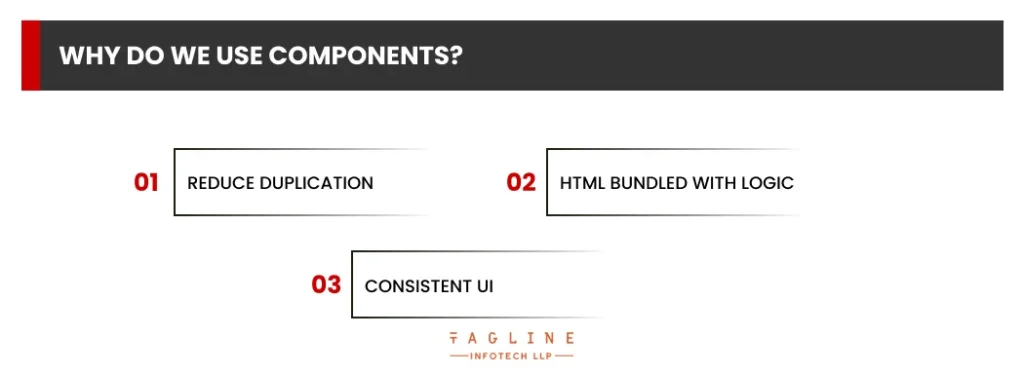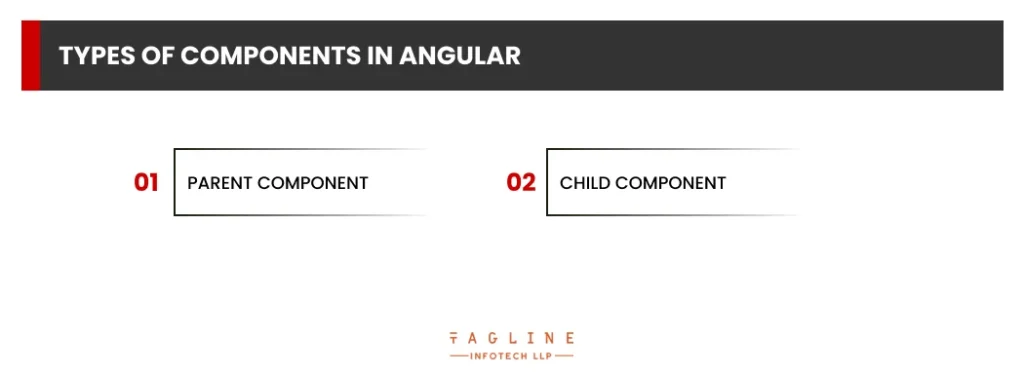Role of Python Libraries in Image Processing
October 30, 2025
Home >> AngularJS >> Components in AngularJS

The development of dynamic web apps is made possible by the potent front-end framework AngularJS. It uses components, and separate objects that mix controller functionality with the appropriate HTML elements, encouraging code reuse and maintainability. Applications greatly benefit from using components in angularjs since they keep applications modular and enable easy reusability. They act as the controller for the material shown in the browser by managing and controlling how HTML files are viewed. Overall, AngularJS create component functionality enables programmers to build web apps that are quickly scalable and interactive.
A JavaScript framework called AngularJS was created to expand HTML’s syntax. Developers may create rich internet applications (RIAs) more quickly and simply thanks to AngularJS.
AngularJS instead offers techniques for boosting HTML, whereas many JavaScript frameworks concentrate on enhancing the capabilities of JavaScript itself. HTML can now do more than just markup things thanks to AngularJS.
Data-binding is one of the features that AngularJS has added that makes it possible for developers to avoid the complicated workarounds often required when creating responsive web apps with HTML front ends.
In Angular 2 and beyond, a component is a condensed directive, similar to a reusable widget, that encourages a methodical and successful development approach. It encapsulates HTML code and enables code reuse throughout a web application, serving as a building element for a component-based design. In order to achieve modularity and promote best practices in AngularJS development, components are essential. This increases the maintainability and scalability of applications. Developers may design reusable, self-contained functional units using component AngularJS, leading to a more structured and effective codebase.

It used to be necessary to replicate the HTML code to insert the same user interface element twice on a page, let alone twice on two separate pages of an application. Maintaining consistency in the UI becomes difficult due to this increasing code duplication and decreasing maintainability. The components of AngularJS provide a straightforward answer to this issue.
Separate files for HTML elements and controller code may appear organised under the MVC design, but this has a drawback in that it is unclear which HTML material is altered or created by which component of the controller logic. It is simpler to comprehend their relationship when both are combined into a single component, and it also prevents changes to one from being made without taking the other into account.
Additionally, components are quite helpful in ensuring that the application’s design is uniform throughout. This technique enables you to keep your items consistent no matter where you utilise them by enabling reusable HTML code.
Need assistance to fine-tune your existing Angular application?
Get in touch with us to work with the best Angular development company to lessen your struggle and achieve the app performance exceeding your user’s expectations.

There are two categories of Angularjs component:
When you construct the App, the Parent Component is the one that is already specified and imported. However, the Child component is the one you may customise to your requirements.
Also Read: Types of Angular Forms and How to Develop Dynamic Forms?
Let’s create a component in AngularJS to construct a straightforward ‘Hello World’ example and demonstrate how simple it is. Our AngularJS component’s final output will be to show the following short bit of HTML:
<span>Hello World!</span>The syntax for creating a component is not too difficult. Declaring its name and passing a configuration object that details what your component should accomplish are all required. In this scenario, it will display some fundamental HTML:
angular.module("myApp", [])
.component("helloWorld",{
template: 'Hello World!'
});All we need to do to use that component in our code is this:
<div ng-app="myApp">
<hello-world> </hello-world>
</div>Let’s say we are developing a messaging app. A reusable contact list component, page-level component, makes up the main view. Making the contact list component as reusable as feasible is crucial since we intend to utilise it in other parts of our programme.
The contact list element has a single function. to display the server’s list of available contacts and print the choices made. The messenger component should accept the contact list component’s choices and add them to its recipients list.
Now let’s improve the utility of our component. A service loads data and then delivered to the required components when a single-page application comprises numerous independent components. In our situation, we might add a parameter that would be used as follows to send a name to our component:
<div ng-app="myApp">
<hello-world name="'John'" > </hello-world>
</div>
By specifying bindings for our component, we accomplish this. Essentially, we are defining the name of the attribute that will be added to our component and the binding we intend to employ here. Four distinct types of bindings exist:
• = indicates that two-way data binding is being used. In other words, if you alter that variable in your component scope, the parent scope will also reflect the change
• & is for callbacks in case your component has to output something to its parent scope;
• @ is for string parameters
• is for one-way bindings when we want to receive a value from a parent scope and not update it.
In our AngularJS component example, a straightforward string will do, making the following our component’s appearance:
angular.module("myApp", [])
.component("helloWorld",{
template: 'Hello {{$ctrl.name}}!',
bindings: { name: '@' }
});Remember that bindings are added to the component’s local scope, which is by default connected to a controller named $ctrl. This is the reason why our HTML template uses the $ctrl.name expression to obtain the value to show.
Are you looking for ways to streamline your web app development process?
AngularJS is a powerful framework for web app development that can help streamline your development process and create dynamic, feature-rich apps. Contact us to learn more.
In conclusion, Angular js components are essential for creating interactive and dynamic online applications. They enable developers to design scalable and well-organized applications by enabling code reuse, maintainability, and modularity. AngularJS facilitates consistency in the user experience by encapsulating HTML elements and functionality inside components.
AngularJS has two types of components: Parent Components and Child Components. The Parent Component is the primary component, giving the application’s overarching structure and organisation. It can also communicate data and states to its subordinate parts. Child Components, on the other hand, are created for specialised application functionality and may be reused throughout the codebase.
In AngularJS, creating a component is simple, and the AngularJS CLI streamlines the procedure even further. Data interchange and interaction between various program elements are made possible by communicating between components through various bindings.
In conclusion, when looking to Hire Angular Developers, you gain access to a powerful tool for building feature-rich and responsive web apps. AngularJS remains a popular and excellent choice for developing modern online applications, as it empowers developers to enhance code quality, maintainability, and reusability through efficient utilization of components.
You can pass data into an AngularJS component using bindings. Bindings allow you to define properties on the component's controller and make them available in the component's template. In the template, you can access the properties using the binding syntax.
Yes, you can and should unit test your AngularJS components to ensure their functionality and behavior are correct. Use testing frameworks like Jasmine or Mocha along with AngularJS's built-in testing utilities like 'ngMock' to write and run tests for your components.
Created with Solvase

Digital Valley, 423, Apple Square, beside Lajamni Chowk, Mota Varachha, Surat, Gujarat 394101
D-401, titanium city center, 100 feet anand nagar road, Ahmedabad-380015
+91 9913 808 2851133 Sampley Ln Leander, Texas, 78641
52 Godalming Avenue, wallington, London - SM6 8NW